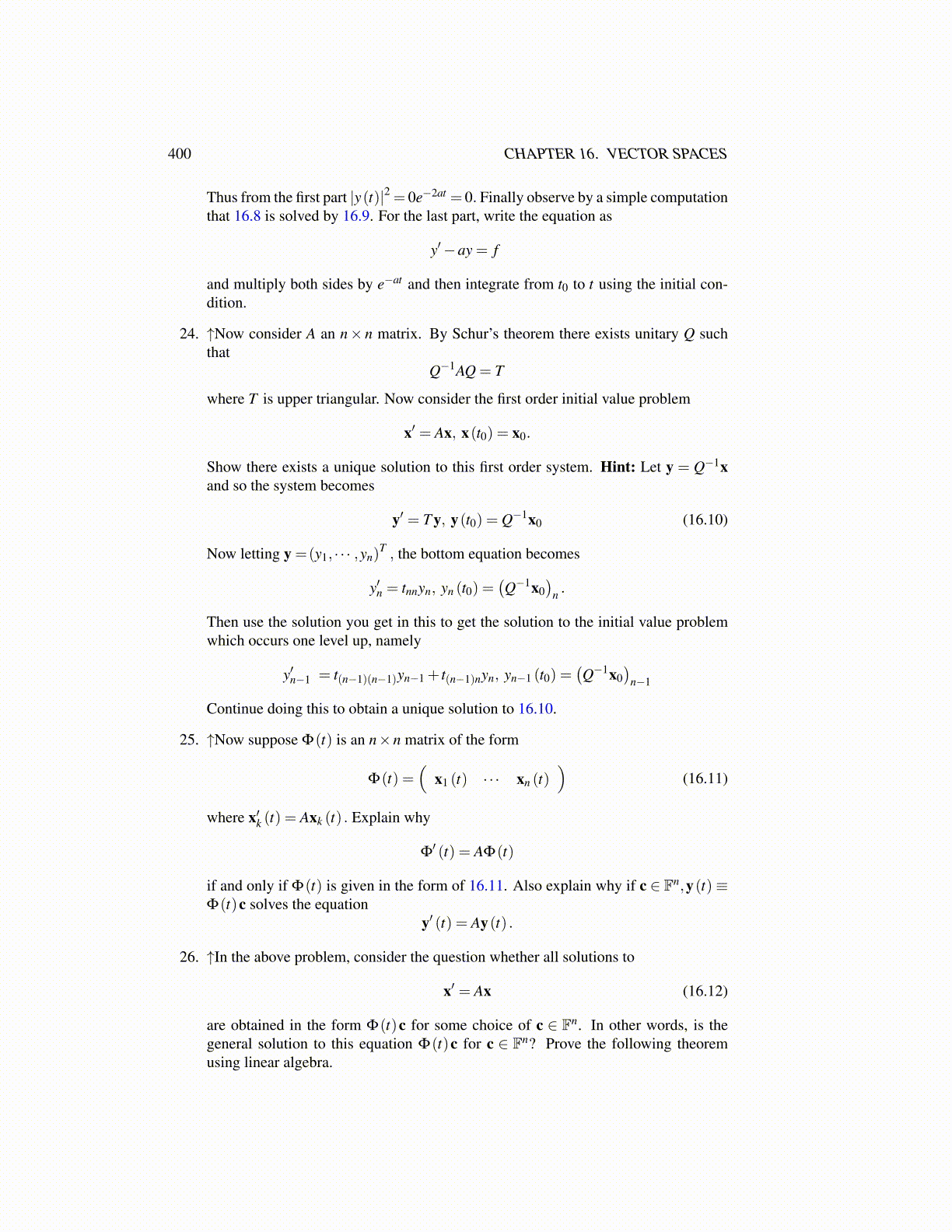
400 CHAPTER 16. VECTOR SPACES
Thus from the first part |y(t)|2 = 0e−2at = 0. Finally observe by a simple computationthat 16.8 is solved by 16.9. For the last part, write the equation as
y′−ay = f
and multiply both sides by e−at and then integrate from t0 to t using the initial con-dition.
24. ↑Now consider A an n× n matrix. By Schur’s theorem there exists unitary Q suchthat
Q−1AQ = T
where T is upper triangular. Now consider the first order initial value problem
x′ = Ax, x(t0) = x0.
Show there exists a unique solution to this first order system. Hint: Let y = Q−1xand so the system becomes
y′ = T y, y(t0) = Q−1x0 (16.10)
Now letting y =(y1, · · · ,yn)T , the bottom equation becomes
y′n = tnnyn, yn (t0) =(Q−1x0
)n .
Then use the solution you get in this to get the solution to the initial value problemwhich occurs one level up, namely
y′n−1 = t(n−1)(n−1)yn−1 + t(n−1)nyn, yn−1 (t0) =(Q−1x0
)n−1
Continue doing this to obtain a unique solution to 16.10.
25. ↑Now suppose Φ(t) is an n×n matrix of the form
Φ(t) =(
x1 (t) · · · xn (t))
(16.11)
where x′k (t) = Axk (t) . Explain why
Φ′ (t) = AΦ(t)
if and only if Φ(t) is given in the form of 16.11. Also explain why if c ∈ Fn,y(t)≡Φ(t)c solves the equation
y′ (t) = Ay(t) .
26. ↑In the above problem, consider the question whether all solutions to
x′ = Ax (16.12)
are obtained in the form Φ(t)c for some choice of c ∈ Fn. In other words, is thegeneral solution to this equation Φ(t)c for c ∈ Fn? Prove the following theoremusing linear algebra.